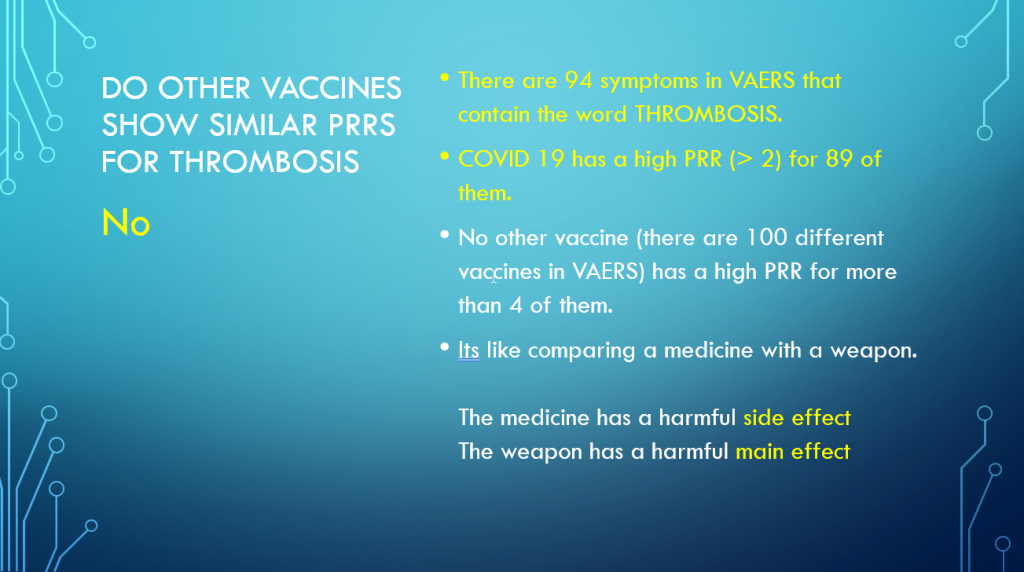
Hidden signals of harms
All HART articles also on Substack. Please consider a PAID SUBSCRIPTION so we can continue our work. Comments are open so you can join in the conversation.
An independent researcher called Craig Paardekooper recently gave a video presentation to Medical Doctors for Covid Ethics International, which can be found here.
Much of what Craig says is confirmation of the adverse event profile we have come to understand of the injections known as “covid vaccines”.
However, Craig does have some interesting and novel approaches to interrogating the data.
A significant element of the EMA and CDC’s’ monitoring for safety signals relies on calculating a proportional reporting ratio (“PRR”). This determines if any particular symptoms are more common with one drug than expected, where “expected” is the rate of that adverse event in the database of adverse events received as a whole.
The regulators claim to have performed such PRR analyses, though despite FOI requests it has not proven possible to obtain the result. So Craig has performed them himself, using all the VAERS data from 1990 to 2023.
If a product caused an increase in many different types of adverse event, this would weaken the signal detection, because no specific symptom would stand out as they are spread thinly across many types.
Hence one of Craig’s methodologies involves looking at clusters of symptoms which may have a common cause. This to some extent counteracts the aforementioned weakness of the PRR signal detection mechanism being used by regulators.
To take just one example – symptoms involving “thrombosis”:
- There are 94 possible symptoms in VAERS containing the word “thrombosis”.
- Data from >100 vaccines is contained within VAERS.
- For the covid vaccines, the PRR is >2 for 89 of the 94 symptoms containing the word “thrombosis”.
- None of the other >100 vaccines has a PRR >2 for more than 4 of the 94 symptoms containing the word thrombosis (and most are zero or one).
This is depicted on Craig’s slide below and you can find his full deck – with explanation of his methodology, here.

Craig has also built a web interface where you can interrogate VAERS data to determine the PRR for any specific symptoms. This can be found here.
It should also be said that even properly performed, relying purely on a PRR analysis for safety signal detection is insufficient and potentially misleading.
As well as the point made above (that where an agent acting across multiple systems causes harms which have a common mechanism to be coded differently this weakens the signal detection), the methodology is basically asking the question: is this product harmful compared to all the others? It is NOT asking the question: is it harmful compared to placebo?
Its usefulness, therefore, depends on an assumption that the other vaccines in its database are “safe”.
Worse still, unless this problem is addressed, the inclusion of very large numbers of adverse events from the covid injectable products will mean that signal detection for future products (if the same methodology is relied upon) will be very adversely impacted.
